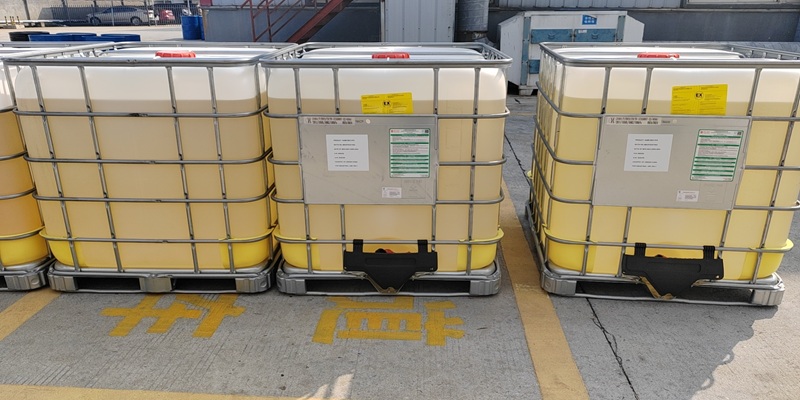In the global polyurethane industry, catalysts play a pivotal role in accelerating reactions, optimizing foam properties, and enhancing production efficiency. As polyurethane continues to expand across industries such as insulation, automotive, furniture, footwear, and construction, the demand for high-performance polyurethane catalysts has significantly increased. Understanding the development trends and technological progress in this sector is essential for manufacturers looking to stay ahead in a competitive market.
1. Polyurethane Catalysts: A Cornerstone of Foam Production
Polyurethane is formed through the reaction of polyols and isocyanates, a process that is highly dependent on catalysts. These catalysts—primarily amine-based and metal-based—control the foaming (blowing) and gelling (curing) reactions, ensuring consistent product quality, mechanical strength, and desired foam structure.
There are several categories of catalysts used in polyurethane systems:
- Tertiary amines: Promote the blowing and/or gelling reactions.
- Metal-based catalysts (such as tin, potassium, or bismuth compounds): Accelerate the curing process and improve final properties.
- Low-emission and reactive catalysts: Developed in response to environmental regulations.
2. Industry Development Trends
a. Environmental Compliance and Low Emission Formulations
With tightening environmental regulations such as REACH in Europe, TSCA in the U.S., and global VOC reduction initiatives, polyurethane catalyst manufacturers are shifting toward low-emission, non-toxic, and reactive catalyst formulations. Conventional tin-based or high-odor amine catalysts are increasingly replaced by:
- Reactive amine catalysts that become chemically bound in the polyurethane matrix.
- Low-VOC alternatives that reduce emissions during production and product use.
- Non-heavy-metal metal catalysts (e.g., bismuth or zinc-based) to replace dibutyltin dilaurate (DBTDL).
Our product portfolio addresses this trend with solutions like MXC-B20, MXC-R40, and MXC-T12, which provide excellent reactivity while meeting international environmental and safety standards.
b. HFO Blowing Agent Compatibility
With the phase-out of high-GWP blowing agents, such as HFC-245fa, the industry has widely adopted HFO-based systems (e.g., HFO-1233zd). These systems require fine-tuned catalysts to maintain balance between reaction kinetics and foam performance. Our HFO-compatible catalysts, such as MXC-MB20 and MXC-70, are specifically engineered to provide smooth rise profiles and excellent surface curing in HFO systems, commonly used in spray foam, rigid boardstock, and appliance insulation.
c. High-Performance Applications
Modern polyurethane applications demand more than basic foam performance. Automotive seating, shoe soles, integral skin foams, and energy-efficient building insulation all require catalysts that offer:
- Delayed reactivity for better mold filling
- Improved curing profiles
- Enhanced mechanical properties
- Compatibility with high-viscosity systems
Products like MXC-37 and MXC-54 serve these markets by ensuring optimal flow, longer cream time, and efficient back-end curing.
3. Technological Advances in Catalyst Formulation
Recent breakthroughs in catalyst technology include:
- Multifunctional catalysts: Combine foaming, curing, and surface adhesion promotion in one molecule.
- Synergistic co-catalyst systems: Blends of amine and metal catalysts to precisely control reaction profiles.
- Sustainable formulations: Bio-based or renewable-source catalysts are under research for greener PU systems.
As a polyurethane catalyst manufacturer, we invest in R\&D to develop customized solutions that meet evolving performance, environmental, and regulatory needs. Our MXC-TMA, for example, enables controlled trimerization in polyisocyanurate (PIR) foam systems used in sandwich panels and high-temperature insulation.
4. Global Market Outlook
The global polyurethane catalyst market is expected to grow at a CAGR of over 5% through 2030, driven by:
- Rising demand for energy-efficient insulation materials in construction and refrigeration
- Growth of electric vehicles and automotive lightweighting
- Expansion of the furniture and bedding industries in emerging economies
- Government policies supporting low-emission and green buildings
Asia-Pacific continues to be the largest and fastest-growing market, followed by North
America and Europe. Manufacturers are increasingly seeking high-performance catalysts that offer a balance of cost, processability, environmental compliance, and foam quality.
5. Our Commitment
As a professional polyurethane catalyst manufacturer, we offer a wide range of high-quality products including:
- Foaming catalysts (MXC-A1, MXC-5, MXC-37)
- Gelling and curing catalysts (MXC-T12, MXC-BDMA, MXC-B20)
- Low odor and reactive amines (MXC-R40, MXC-70, MXC-BDMAEE)
- Specialty trimerization catalysts (MXC-TMA)
- Environm entally friendly alternatives to DBTDL and other restricted substances
We are committed to supporting our partners with technical guidance, formulation support, and continuous innovation to keep pace with the ever-changing demands of the polyurethane industry.
Conclusion
The development of polyurethane catalysts is a key enabler of innovation in the polyureth ane foam industry. From insulation to automotive, from flexible to rigid foam systems, catalysts ensure the precision, safety, and performance that modern applications demand. As environmental pressures and technological expectations rise, manufacturers must choose partners with cutting-edge solutions and deep industry knowledge.
We invite manufacturers, formulators, and system houses to contact us to explore how our polyurethane catalysts can optimize your production, meet regulatory needs, and deliver high-performance results.
Contact us today to learn more about our product portfolio or request samples for testing.
Post time: Jul-10-2025


